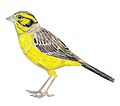

This is a list of Macaronesian animals extinct in the Holocene that covers extinctions from the Holocene epoch, a geologic epoch that began about 11,650 years before present (about 9700 BCE) [a] and continues to the present day. [1]
Contents
- Mammals (class Mammalia)
- Rodents (order Rodentia)
- Carnivorans (order Carnivora)
- Birds (class Aves)
- Landfowl (order Galliformes)
- Pigeons and doves (order Columbiformes)
- Rails and cranes (order Gruiformes)
- Shorebirds (order Charadriiformes)
- Albatrosses and petrels (order Procellariiformes)
- Hawks and relatives (order Accipitriformes)
- Owls (order Strigiformes)
- Perching birds (order Passeriformes)
- Reptiles (class Reptilia)
- Squamates (order Squamata)
- Turtles and tortoises (order Testudines)
- Insects (class Insecta)
- Butterflies and moths (order Lepidoptera)
- Slugs and snails (class Gastropoda)
- Order Stylommatophora
- Notes
- References
Macaronesia is a collection of four volcanic archipelagos in the North Atlantic, off the coast of Africa. [2] Macaronesia consists of the Azores (part of Portugal), Maderia (part of Portugal), the Canary Islands (part of Spain), and Cape Verde (an independent country).
Numerous animal species have disappeared from the Macaronesian islands as part of the ongoing Holocene extinction, driven by human activity.
























